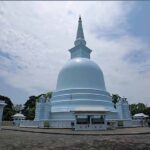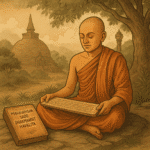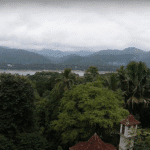Eclipse, Storm, or Just a Powerful Story?
A reflective conversation between two truth-seekers exploring the mystery of Buddha’s first visit to Lanka
“Maybe the darkness at Mahiyangana wasn’t magic or myth — but the memory of a natural event told with emotion. What matters more is that when the Buddha came, the light returned.”
Aquila:
Bro, have you ever read that part in the Mahavamsa where it says when Lord Buddha came to Mahiyangana, day became night? Like, the sky turned dark, and then the light returned?
Voice of Reason:
Yeah, I remember that line. Some say it means a solar eclipse happened. Sounds a bit supernatural, doesn’t it?
Aquila:
That’s what I was thinking. But instead of just accepting it blindly, I wanted to check — was there actually an eclipse over Sri Lanka around the time Buddha supposedly visited?
Checking the Sky: Was There a Solar Eclipse?
Voice of Reason:
Good idea. We looked at NASA’s eclipse records between 600 BCE and 400 BCE, since that’s the general time range people use for the Buddha’s life.
And guess what?
Aquila:
Let me guess — no eclipse?
Voice of Reason:
Exactly. There was no total solar eclipse visible over Sri Lanka during that time.
🟡 Eclipse Data and Astronomical Records:
- NASA’s 5-Millennium Solar Eclipse Database (600 BCE – 400 BCE):
https://eclipse.gsfc.nasa.gov/SEcat5/SE-0599–0500.html - Lunar Eclipse visible over Sri Lanka – 31 Jan 486 BCE:
https://eclipse.gsfc.nasa.gov/LEcat5/LE-0499–0400.html - Total Solar Eclipse – 4 July 335 BCE (visible across Sri Lanka):
Mentioned in local scholarly papers & astronomical reconstructions:
dl.nsf.gov.lk PDF
But There Was a Lunar Eclipse
Aquila:
Ah okay! I remember something else though. Wasn’t there a lunar eclipse around 486 BCE?
Voice of Reason:
Yep. On 31 January 486 BCE, during the Duruthu Full Moon Poya. A total lunar eclipse—and it would’ve been clearly visible in the Mahiyangana region.
So if any kind of celestial darkness occurred during Buddha’s visit, it was more likely a lunar eclipse, not a solar one.
What About the 335 BCE Solar Eclipse?
Aquila:
But there was one total solar eclipse that keeps popping up — on 4 July 335 BCE, right?
Voice of Reason:
Yes, and it was big. That eclipse was visible across almost the entire island of Sri Lanka.
Aquila:
Interesting… so what if Buddha’s actual lifetime was later than commonly believed? Could the Mahiyangana event have lined up with that eclipse?
Voice of Reason:
That’s one possibility. If we assume the dating systems used in chronicles like the Mahavamsa have inconsistencies — or symbolic starting points — then 335 BCE might still fall within the true window of his activity.
But honestly, the Mahavamsa seems to place Mahiyangana closer to the early part of Buddha’s life. So it’s unlikely, but not impossible, that 335 BCE was the actual event.
Future Investigation: Re-rooting the Timeline
We also propose this as a future blog and research topic:
Was the Buddha’s life really between 563–483 BCE? Or could it have been closer to 400–300 BCE?
Matching the 335 BCE eclipse with the Mahiyangana event might give us new clues to reconsider the standard timeline.
We’ll explore:
- Overlaps in historical events
- Gaps in archaeological layers
- Symbolic vs literal time in the Mahavamsa
Stay tuned for that future post!
📬 Join the Journey
Be the first to receive upcoming articles, research insights, and deep discoveries about the Buddha’s real path in Lanka.
Or… Was It Just a Storm?
Aquila:
Or maybe, this wasn’t an eclipse at all. The original Mahavamsa passage mentions rain, storm, and darkness. What if it was just… a big monsoon storm?
Voice of Reason:
Exactly. A classic tropical storm could’ve rolled in suddenly. Imagine a thunderstorm darkening the sky, heavy winds, and a sudden calm afterward. People back then might’ve seen that as a powerful spiritual sign.
Aquila:
And over time, the story became more dramatic. Oral tradition turned “storm” into “day became night.”
🟡 Mahavamsa References:
- Mahavamsa Chapter I (Geiger translation):
https://www.budsas.org/ebud/mahavamsa/chap001.html - Related oral interpretations (symbolic, metaphorical meanings):
https://dakinitranslations.com/
https://mahavamsa.org/
🟡 Pāli Text Access (for future reference):
- Full Mahavamsa Pali + English (archived scan):
https://archive.org/details/mahavamsagreatch00geigrich
Would the Buddha Scare People?
Aquila:
Also bro, let’s be real. Would Lord Buddha — the embodiment of compassion — ever scare people just to prove a point?
Voice of Reason:
You’re right. The Buddha wasn’t a showman. If Yakkhas were really just early tribes or forest-dwellers, then they were humans—not demons. And the Buddha wouldn’t drive them out with fear.
He would have approached them with peace and wisdom, just like he did with everyone else.
A Symbolic Meaning?
Aquila:
So maybe the whole story is symbolic. The “darkness” represents fear, tribal conflict, or ignorance—and the Buddha’s presence brought clarity, like light returning to the land.
Voice of Reason:
Yes. And whether it was a storm, eclipse, or just a powerful moment in human memory… it marked the beginning of a spiritual awakening in this island.
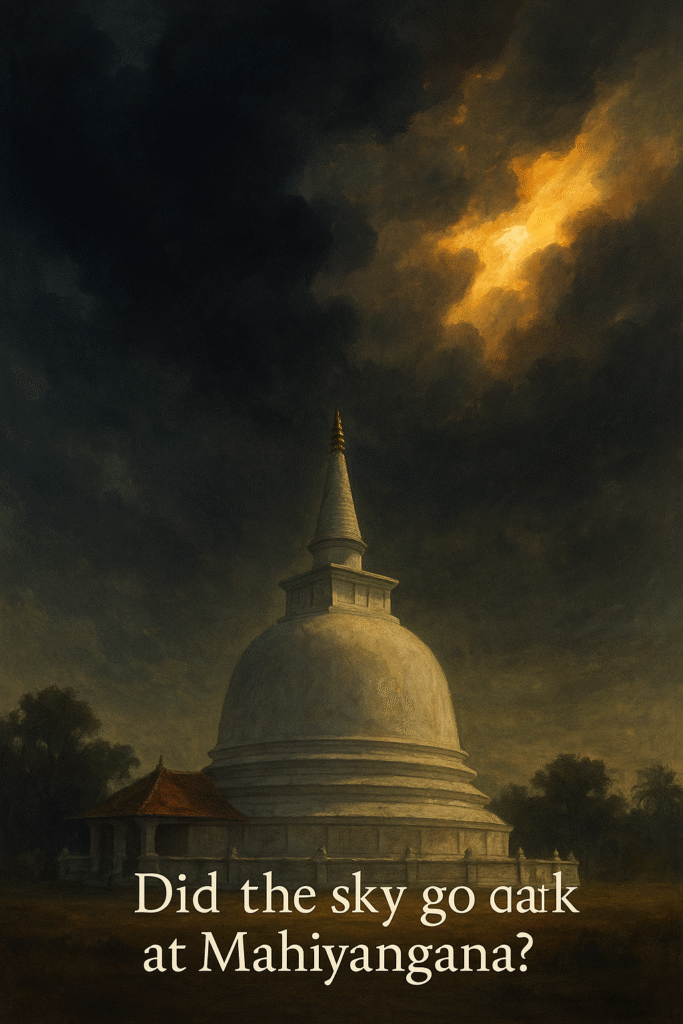
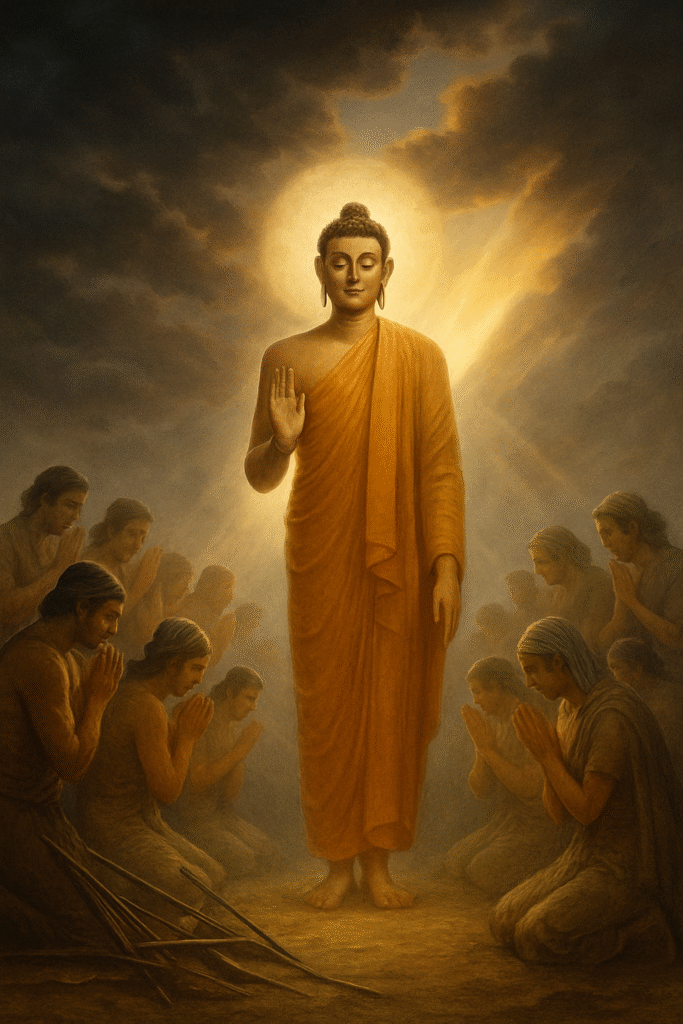
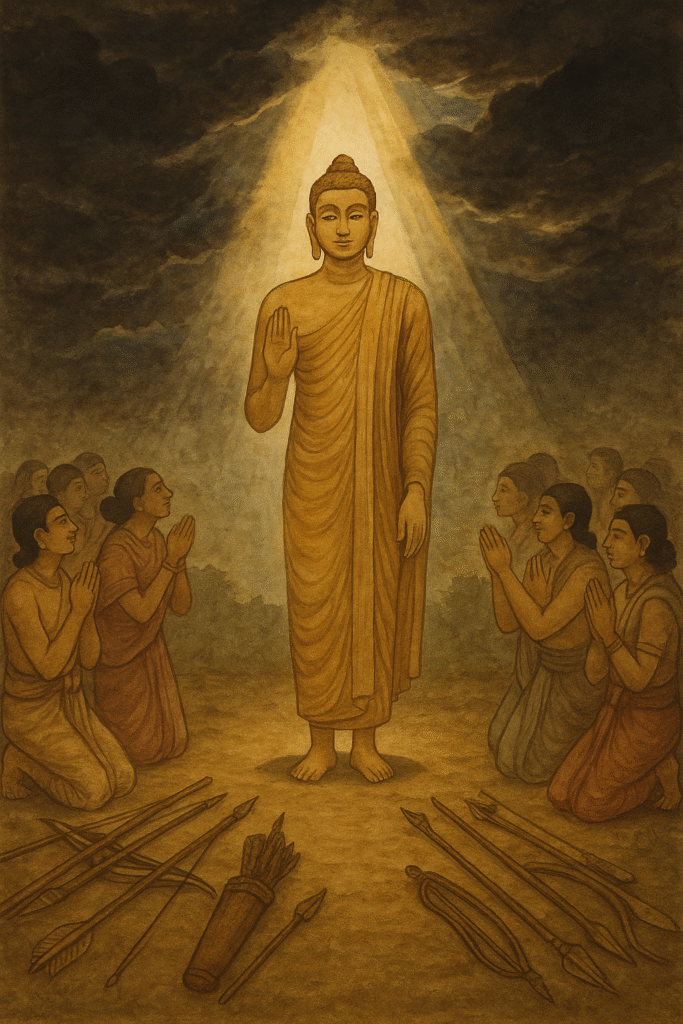
Creative Images by Voice of Reason Chat GPT
Final Thoughts
Aquila:
So, did the sky go dark at Mahiyangana?
Voice of Reason:
Maybe. But not because of magic. It could’ve been a storm, or eclipse, or just a memory told with emotion.
What matters more is what it meant — the light returned. And with it, began the journey of the Dhamma in Lanka.
📌 This post is part of the Buddha of Lanka theory – exploring how real history, natural events, and sacred stories all come together in the land where the Buddha truly walked.
